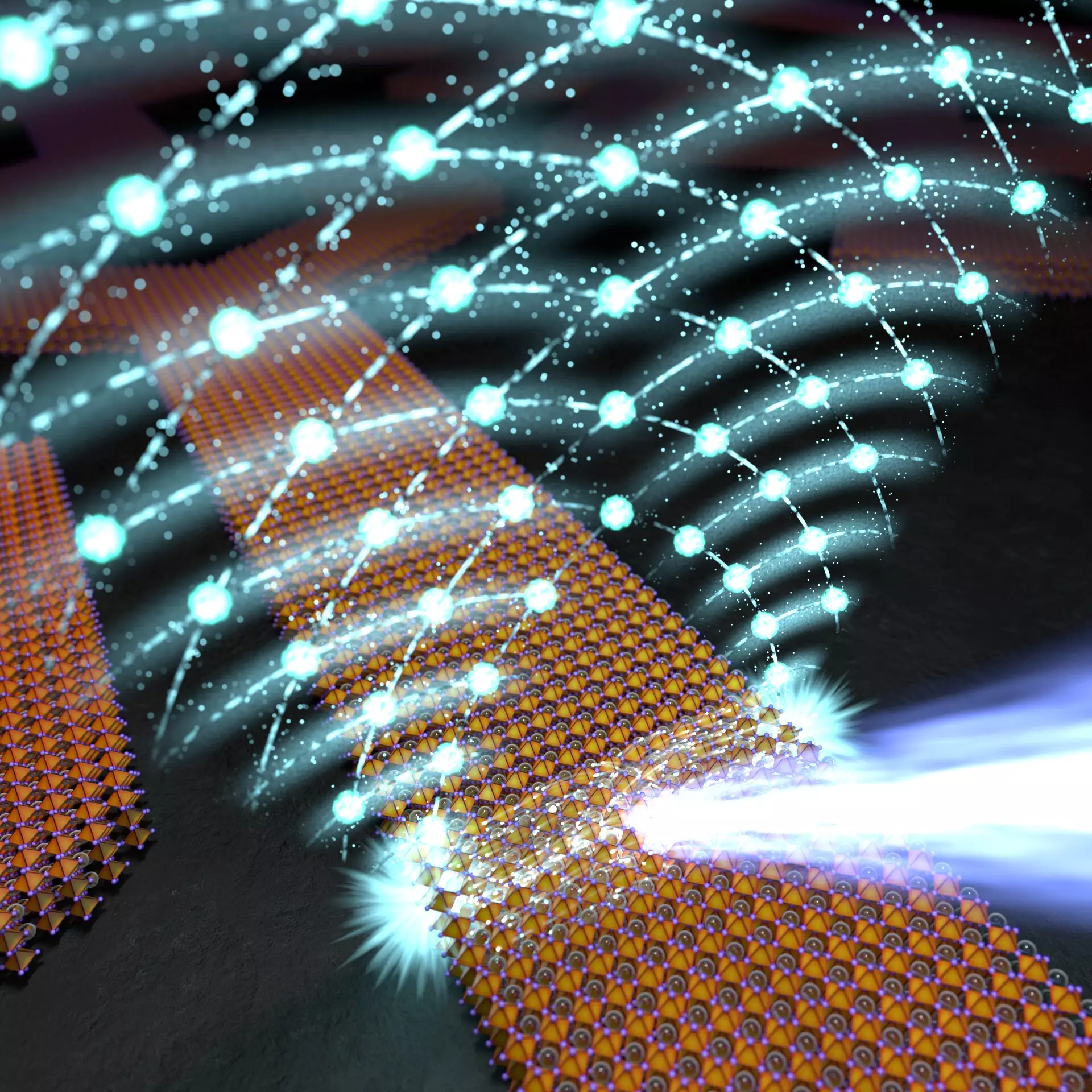The burgeoning field of integrated photonics is poised for a transformative leap, thanks in large part to recent advances in material science. Researchers from the University of Warsaw, in collaboration with international institutions, have successfully engineered perovskite crystals tailored for nonlinear photonic applications. This innovative work explores the potential of these crystals to act as essential components such as waveguides, modulators, and couplers. By seamlessly integrating these materials into existing photonic systems, the groundwork is laid for enhanced signal processing capabilities, both in classical and quantum computing environments.
Perovskite materials, specifically CsPbBr3, have emerged as frontrunners in this research, noted for their impressive semiconductor qualities. Professor Barbara Piętka emphasizes their adaptability, stating that perovskites can be synthesized in various forms—from bulk crystals to minute nano-structures. Crucially, their high exciton binding energy and oscillator strength facilitate substantial light interaction, which is a prerequisite for efficient nonlinear effects. This emphasizes the need for continued exploration into their unique properties, which may yield even more diverse applications ranging from energy harvesting in solar panels to novel laser technologies.
The researchers employed innovative microfluidic methods to synthesize these crystals with controlled geometries. This technique allows the creation of high-quality perovskite structures tailored for specific optical functionalities. By manipulating solution concentrations and temperature while maintaining a vapor-saturated environment, the team was able to develop high-purity single crystals. These can be fashioned into intricate shapes, enhancing compatibility with existing photonic devices and paving the way for their integration into future technologies.
A pivotal aspect of this research is the edge lasing phenomenon observed in the fabricated perovskite crystals. Unlike traditional lasing that relies on weak light-matter interaction, the edge lasing mechanism operates under strong coupling conditions. Exciton-polaritons, the quasiparticles responsible for this behavior, merge characteristics of both light and matter, promoting a new regime of optical coherence. The production of a non-equilibrium Bose-Einstein condensate of exciton-polaritons is particularly noteworthy, indicating a substantial breakthrough in our understanding of light-matter interaction at room temperature.
The implications of this work extend beyond basic science. The coherent nature of the emitted light from various points on the crystallized edges and corners paves the way for applications in advanced photonic circuits, where managing signal integrity is vital. As observed in the laboratory, the light emission underwent blueshifts correlated with the population of modes, a clear indicator of nonlinear effects at play. This finding is significant, confirming that interactions within the polariton condensate can sustain light propagation over extended distances.
The research team meticulously documented their findings, supported by robust theoretical models. Utilizing Maxwell’s equations to visualize photonic behavior in non-traditional structures reveals a rich array of light modes existing within these engineered perovskite formations. This is crucial for future developments of compact systems capable of handling both classical and quantum tasks.
Advances in simulations led by scientists such as Dr. Andrzej Opala have elucidated the relationship between geometry and optical performance, enhancing our understanding of how light propagates in these structures. As integration becomes increasingly essential in the tech landscape, the ability to combine lasers, waveguides, and modulators on a single chip represents a monumental shift in potential device architecture.
Looking forward, the findings signal promising avenues for commercialization. The potential compatibility of perovskite structures with silicon technologies offers a tantalizing prospect for integrating this innovation into mainstream use. Physicists like Michał Matuszewski are optimistic about the prospect of achieving single-photon quality devices, signifying that perovskites might serve as cornerstones of future photonic circuits.
Such developments could considerably expand the realm of optical technology, possibly leading to breakthroughs in telecommunications, data processing, and even quantum computing. This research not only represents a significant scientific milestone but also prompts a re-evaluation of the materials we utilize in photonics today. Through continued collaboration and exploration, the integration of perovskite structures into the photonic landscape could herald a new era of technological advancement, redefining our approach to integrated systems.

